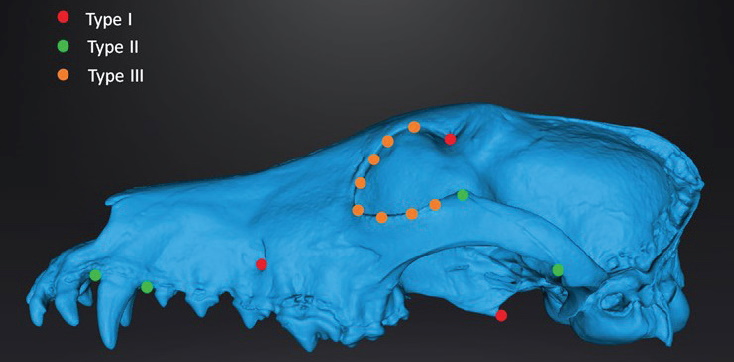Geometric morphometry in veterinary anatomy
Keywords:
Canonical variate analysis, discriminant function analysis, morphology, principal component analysis, shape analysisAbstract
Geometric morphometry is a shape analysis method based on the analysis of landmarks, curves and contours, all geometric data from two or three-dimensional Cartesian coordinates. In this analysis, analysis is made on 2 or 3 dimensional samples using Landmark processes. After the Landmark processes, Generalized Procrustes Analysis is applied to standardize the coordinate data before statistical analysis. Then, with Procrustes Analysis, the points are superimposed, and, then, the average shape is obtained. With Principal Component Analysis, shape variations are obtained for all samples. Shape differences between groups can be revealed using Discriminant Function Analysis and Canonical Variate Analysis. In recent years, shape analysis has been used in veterinary anatomy, and shape variations between samples have been revealed. Geometric morphometry, which includes more interpretation features than linear measurements, has brought a different perspective to veterinary anatomy. It contains useful reference information, especially in the field of gender analysis and taxonomy.

Downloads
Published
How to Cite
Issue
Section
License
Copyright (c) 2023 İlayda Boz, Nicoleta Manuta, Ermiş Özkan, Oya Kahvecioğlu, Gülsün Pazvant, Nazan Gezer Ince, Nedzad Hadziomerovic, Tomasz Szara, Yusuf Altundağ, Ozan Gundemir

This work is licensed under a Creative Commons Attribution 4.0 International License.







